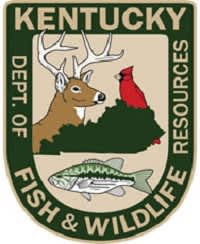Kentucky’s 2013 Archery Deer Hunting Season Begins Sept. 7

Kentucky’s 2013-14 deer season opens on Saturday, Sept. 7, the first day of the 136-day archery season. The season continues through Monday, Jan. 20, 2014.
For the past three seasons, record harvests have been posted for the month of September: 5,577 deer in 2012, 4,945 in 2011 and 4,407 in 2010.
“Even though weather conditions aren’t always ideal in September, there are some advantages to early season hunting,” said Tina Brunjes, deer program coordinator for the Kentucky Department of Fish and Wildlife Resources.
Most deer, even mature bucks, are still in their summer pattern when bow season opens. They are more visible during daylight hours than later in the season and their daily movements are more predictable. Deer frequent crop fields and weedy pastures in the late afternoons, especially when the rising moon is high in the sky at dusk. In September, these quarter moon periods fall on the 12th and 26th of the month.
The current statewide population estimate for Kentucky’s deer herd is about 750,000, before fawning, with a stable to slightly decreasing trend. “Hunters who are monitoring trail cameras or spending time observing deer in the afternoons realize it has been a good year for deer reproduction and survival,” said Brunjes. Heavy rains in the spring and early summer created lots of food and escape cover for deer.
The outlook for deer season is excellent, but ultimately the weather during modern gun season in November has the biggest impact on overall harvest.
Last season’s deer harvest was the highest on record. Deer hunters reported taking 131,395 deer, a 9.8 percent increase from the 2011-2012 season. “A higher percentage of our hunters were successful,” said Brunjes. “The record harvest was opportunity driven. They saw deer and they took them.”
The 2012-13 harvest included 42 reported entries, 31 typical and 11 non-typical, into the Boone & Crockett Club record book. These record deer came from 35 of Kentucky’s 120 counties.
After each season, deer managers calculate a population estimate for every county by in-putting harvest and age structure data into a computer population model.
Counties are assigned a zone status which affects season lengths and bag limits. Kentucky is divided into four deer management zones.
The management strategy for Zone 1 is herd reduction. For Zone 2 and 3 counties, herd maintenance is the goal. Increasing the herd is the aim for Zone 4 counties. This season there were no changes in the zone status for any of Kentucky’s 120 counties.
“We’re where we want to be in most counties,” said Brunjes. “There were no changes in the regulations this season because we’re happy with having a high percentage of older bucks and about 50 percent of does in the harvest.”
Overall age structure of the harvest indicates that the majority of hunters are recognizing and passing up male fawns. Most antlered bucks taken in the 2012-2013 season were 2 ½ years old or older. The female harvest was also primarily comprised of adults, rather than fawns or yearlings.
In the past decade, the Zone 1 counties in northern Kentucky have experienced the most herd growth. “Populations took off in the late 1990s and have remained high,” said Brunjes.
Hunters who would like to donate venison should visit the Kentucky Hunters For the Hungry website at www.huntersforhungry.org for the list 57 processors who are accepting deer.
“This is our 13th season of providing nutritious venison to needy Kentucky families,” said Ivan Schell, KHFH Executive Director. “The 70,000 pounds of venison processed annually provides about 500,000 meals.”
KHFH pays for the processing and hunters who donate a deer receive a car sticker confirming their “doe-nation.”

